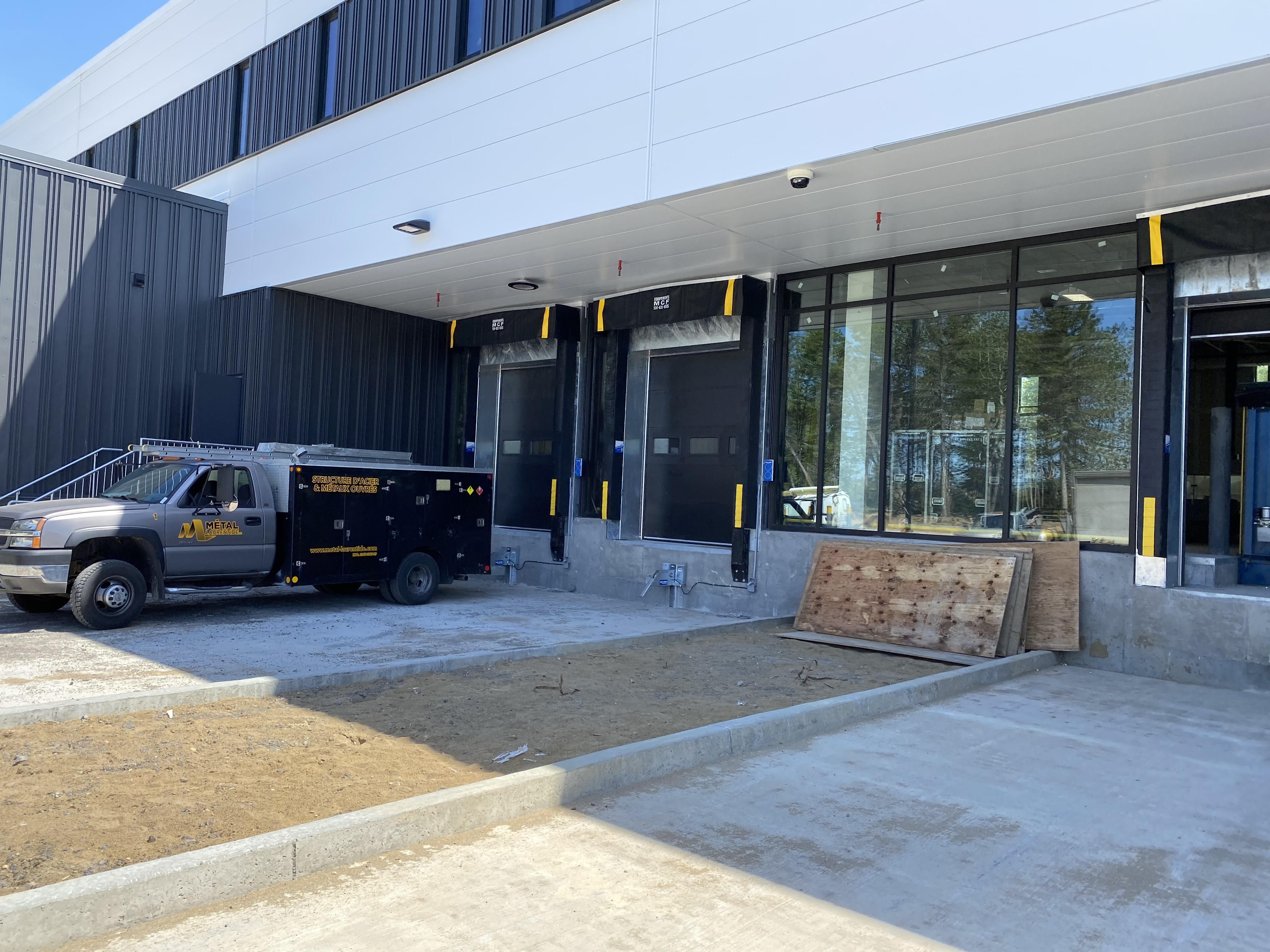Rain deflectors on dock shelters vs metal canopies: Choosing the right solution

When designing a loading dock, protecting goods, equipment, and personnel from the elements is paramount. Rain, in particular, poses significant challenges, from slipping hazards to water damage and reduced operational efficiency. Two popular solutions to mitigate rain issues are rain deflectors on dock shelters and metal canopies. While both serve the same purpose of keeping the area dry, their designs, effectiveness, and practicality differ. Here, we compare these two options to help you make an informed decision.
Rain Deflectors on Dock Shelters
Rain deflectors are an integral component of many modern dock shelters. These are flexible or rigid extensions attached to the top of dock shelters, designed to channel rainwater away from the dock door opening and loading area.
Advantages
- Seamless Integration: Rain deflectors are built into or retrofitted onto dock shelters, making them an unobtrusive solution.
- Cost-Effective: Compared to metal canopies, rain deflectors generally involve a lower upfront investment.
- Efficient Water Management: These deflectors are engineered to direct water flow away from the dock face, minimizing pooling and splashing.
- Space-Saving: Unlike canopies, rain deflectors don’t require additional overhead structures, which is ideal for facilities with height or spatial constraints.
Disadvantages
- Limited Coverage: While effective against rain, they may not protect against snow, hail, or heavy winds as well as canopies.
- Durability Concerns: Depending on the material, rain deflectors might need more frequent maintenance or replacement, especially in areas with harsh weather.
- Restricted Versatility: Rain deflectors’ efficiency depends heavily on the quality and design of the dock shelter they accompany.
Metal Canopies
Metal canopies are standalone structures that extend outward from the building’s facade over the loading dock. They act as a rigid, permanent roof to shield the dock area.
Advantages
- Broad Protection: Metal canopies provide comprehensive coverage against rain, snow, and direct sunlight, offering year-round weather protection.
- Durable Construction: Made from robust materials like steel or aluminum, canopies are designed to withstand extreme weather conditions with minimal maintenance.
- Customizable Designs: Canopies can be tailored to match the architectural aesthetics and operational requirements of a facility.
- Enhanced Safety: By covering the entire loading dock, canopies reduce the risk of slipping and improve the working conditions for personnel.
Key Factors to Consider
When deciding between rain deflectors and metal canopies, consider the following:
- Weather Conditions: Facilities in areas with heavy rainfall, snow, or strong winds might benefit more from metal canopies, while those in milder climates may find rain deflectors sufficient.
- Budget: For those working within tighter financial constraints, rain deflectors offer a cost-effective solution.
- Space Constraints: Rain deflectors are ideal for facilities with limited space, while metal canopies require more room for installation.
- Operational Needs: Facilities with high dock traffic or sensitive goods that require superior weather protection might prioritize the comprehensive coverage of canopies.
- Maintenance Requirements: Consider the long-term maintenance and durability of each option to avoid unexpected costs.
Conclusion
Both rain deflectors on dock shelters and metal canopies have their place in modern loading dock design. Rain deflectors excel in cost-efficiency and space-saving integration, while metal canopies offer unmatched durability and all-weather protection. By evaluating your facility’s specific requirements and environmental challenges, you can choose the solution that best meets your needs and ensures smooth, weather-protected operations.